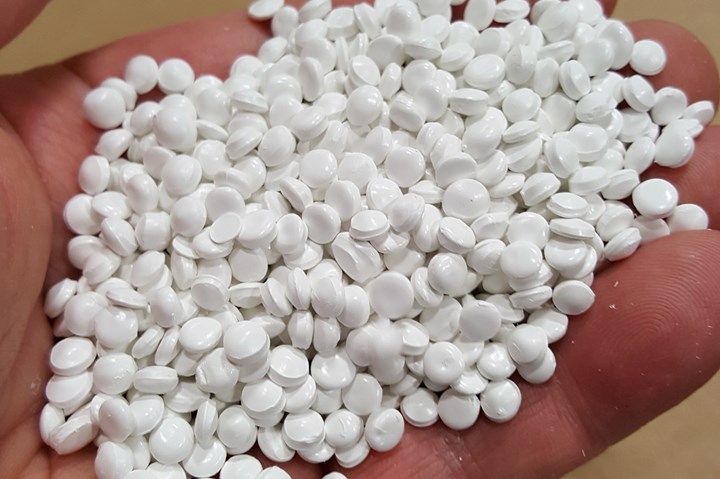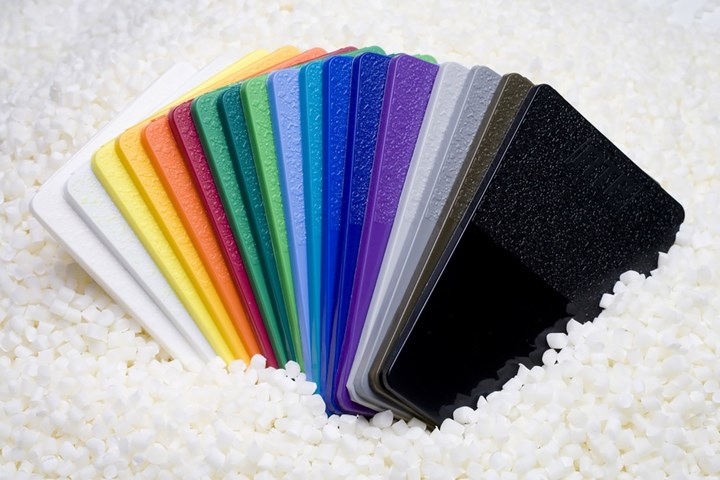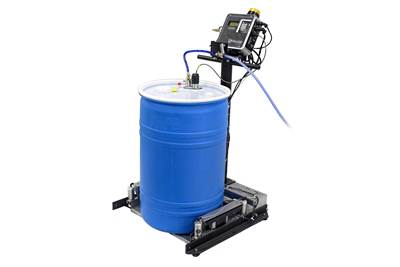Get Better at Quoting Injection Molded Parts: Part 1
Follow these detailed tips to get you the jobs you want. This installment focuses on the various raw material aspects of quoting.
You may not think that quoting injection-molded parts is a relevant subject for the Tooling Know-How column of this magazine. I assure you it most definitely is. In fact, if you are not well versed in all areas of injection molding, which includes part design, thermoplastic materials, additives, tooling, molding, automation, inspection, packaging and secondary operations, you should not be the one doing the quoting.

The material price used in your quote should take into account the purchasing quantity, forecasted price and many other important factors.
There is an age-old saying in our industry that the selling price of a molded part is roughly one-third the cost of the material, one-third the machine and labor costs, and one-third overhead and profit. The sooner you forget that saying the better. Many factors determine the true cost of a molded part, and each one has several important subfactors. In the first two installments of this series I will discuss part weight and material cost—in detail.
With the advent of solid-modeling software programs used throughout our industry, obtaining the part volume—used to calculate the part weight—is both commonplace and accurate. Calculating the part volume from a 2D drawing is becoming less and less common. Once the volume is determined, you will need to know the specific gravity of the molding material.
The part weight (g) = the part volume (in.3) × 16.39 (g/in.3 of water) × the specific gravity of the material (a dimensionless ratio). The specific gravity can vary a little with different grades of the same material, or it can vary a lot with different types of material. For example, a part having a volume of 10 in.3 can weigh 167 g in ABS. The same part in rigid PVC can weigh 230 g—more than 38% heavier. If the potential customer is receptive to considering alternate types of material, you need to compare the cost per part in each material, not the cost per pound of each material.
For the sake of example, let’s assume you can purchase rigid PVC at $1/lb and ABS at $1.25/lb. PVC has a specific gravity of 1.40 and ABS has a specific gravity of 1.02. The accompanying table shows how the less expensive PVC material actually results in a greater material cost per part.
The next thing you need to know is the expected annual quantity of parts to make per year—or at least the first year. Convert that quantity into the total pounds of material required, which is equal to the number of parts times the part’s weight in grams, divided by 454 g/lb. The cost of thermoplastic materials will vary by both their type and the quantity purchased. Ask your material supplier for the price per pound for various quantities (tier pricing) and make sure they are delivered prices—FOB your facility—because freight costs can be high, especially for less than truckload (LTL) quantities.
Material-Buying Strategies
The question now becomes how much material should you purchase. Enough for just one run? Three months’ worth? Six months’ worth? Once you decide that, then you know the correct tiered material price to use for quoting. Some molders will buy a large amount of material at a lower price, but use the smaller quantity tier price when quoting the job. That will add a little more profit to the part, but the Accounting Department should calculate the savings vs. the cost of tying up the extra money and valuable floorspace in the warehouse.
Now let’s consider material availability and volatility. Occasionally, a customer has an in-house polymer chemist specify a particular brand and grade of material, based on the dubious and often misleading physical properties listed on a specification sheet. The part drawing, or an email might state: “No substitute materials allowed.” Material suppliers usually don’t stock uncommon materials and the leadtime can be four to six weeks for them to compound it. That’s going to be a problem if the customer is building a prototype tool with a two or three week delivery. In addition to the long leadtime, there is usually a minimum order quantity. That can be an issue if the part weight and annual order quantity are small. Discuss these concerns with your customer during the quoting process. Nobody likes surprises after the fact.
You quote a job based on current material prices. Depending on the complexity, it can take between 10 and 20 weeks to build a mold. What guarantee do you have that the material price will not increase during that time? Many materials have consistent prices. Others fluctuate daily, based on demand, as well as the cost of crude oil or natural gas.
Post-industrial and post-consumer materials can have tremendous swings in both price and availability, especially with the recent push to “go green.” Your material supplier will have a good idea on the future price and availability of a particular material. If he says it’s volatile, you have two choices: You can either increase the material cost based on some future projection; or you can tell the customer what price was used to quote the job, and let him know that any future price increases will need to be passed on to them.
Your material supplier will have a good idea on the future price and availability of a particular material.
Ideally, the request for quotation is for a material that you currently use a lot of for other customers. A material that you purchase in large quantities, such as full truckloads or rail cars. Then the question becomes what price should you use for quoting. Do you use the low price you currently pay to help ensure you get the job, or do you use a price somewhere in between your price and the higher price your competition will pay for a smaller quantity?
I suggest using the lower price for two reasons. First, you obviously want the business. Second, because the more material you buy from a supplier, the better your negotiating position. A negotiated lower material price will then add more profit to every job you have using that material. Purchasing a lot of a particular type of material also puts you in a better position in case the material supplier has to declare force majeure due to an accident, fire, natural disaster, or even high demand.

Colorants can add significantly to material costs. Your quote should consider order quantitites and the possibility of supplying the base resin for the part to the color compounder to make the masterbatch. Also consider changing “natural”-color parts to black to hide small cosmetic defects. (Photo: RTP)
Consider Color Costs
Colorant can add a lot to the cost of a part. This is where you need a knowledgeable color compounder, but more importantly, you need to communicate to the compounder what the intended end use of the product will be. For example, if it will be exposed to the elements, come in contact with food, or be used in a medical application, these all need special consideration.
The letdown ratio for a colorant can be anywhere from 200:1 to 10:1. I never recommend anything less than 50:1, meaning 50 lb of base resin for every pound of colorant. Most black colorants are extremely cheap, while primary colors and specialty colorants, such as fluorescents, are considerably more expensive. The letdown ratio depends not only on the compounder’s formulation, but on the type of material and the wall thickness of the part. If you hold the molded part up to the light and you can see through it, or you see swirls, that is most likely going to be a rejected part. Achieving an opaque and uniform color distribution is controlled by many factors, such as the colorant formulation, the letdown ratio, the base resin, screw and barrel wear, backpressure, screw rpm, etc.
The common work-around for poor colorant distribution is to use a high- shear mixing nozzle or mixing screw, increase the backpressure, run regrind, or the more common and least desirable method—increasing the letdown ratio. I’ve seen jobs where the floor personnel increased the letdown ratio so much that the owner of the company lost money every time the mold opened.
Just like the base resin, the cost of the colorant varies depending on the order quantity and freight costs—and they vary a lot. That’s why you also need to obtain tiered pricing for the colorant—FOB your facility. When you calculate the annual poundage of raw material required, apply the same purchasing decision to determine the amount of colorant to purchase and it’s associated tier price for quoting.
Ask the compounder if you can send a sufficient amount of the base resin to be used as the colorant carrier. The reason is that materials have different natural colors—from crystal clear to chocolate milk. Using the same base resin the part is to be molded in as the carrier will improve the odds of a perfect color match on the first sampling. It will also guarantee that the colorant is compatible, and improve the physical properties of the part. The benefits of doing this far outweigh any initial cost savings from using a less expensive generic carrier.
Coloring natural material for several jobs is a good insurance policy to reduce the risk of running out of the base resin.
How is the color mixed? Do you have a color feeder on the feed throat of the machine, or does someone have to manually load and unload a large stand-alone mixer? This is another cost directly associated with a specific job. Many molders don’t like dealing with colorants. They try to purchase pre-colored material simply because of the convenience. That’s rarely a good idea. They are forced to purchase smaller quantities at higher prices.
Coloring natural material for several jobs is a good insurance policy to reduce the risk of running out of the base resin. Also, 10 small drums of different colorants take up a lot less space in the warehouse then 10 partially filled gaylord boxes of different colored materials. Cost-conscious molders go to the other extreme. They take advantage of all of the benefits of using liquid versus pelletized colorant.
If the specified color of the part is “natural,” which is common for hidden internal component parts, such as gears, you might ask the customer if you could mold it in black. Yes, you will have to add colorant to the base resin, but black colorant is usually inexpensive. More importantly, black hides many defects that could otherwise be rejectable in a material’s natural color.
For example, black specks of carbon can break loose from the screw and barrel, and will show up like a sore thumb on a natural part. That could be a concern, if not rejectable by the customer. The lower reject rate of black parts will typically outweigh the added cost of the colorant.
Quite often, the color of the part has to match a mating part produced somewhere else—for example, an extruded plastic profile, or a painted metal part. Not only can this require several mold samplings before the color is acceptable to the customer, it also requires tighter-quality control inspections during production. You should consider adding a slight upcharge for a more demanding project like this.
Who Pays the Bill?
You might also consider asking, or even insisting, that the customer pay for the material and colorant up front. This is a common request when the materials are specific to that customer and there is concern about getting stuck with a lot of useless inventory if the program does not live up to the expectations of someone in their Marketing department. Everyone thinks their product will sell like hot cakes! The reality is—most don’t. It’s also beneficial to ask the customer to pay for these materials when there are minimum order quantities that end up being a six-month or longer supply. The only downside to having the customer purchase the materials is the loss of a small amount of profit added to the cost of the material when quoting the job, which leads to my next topic.
Molders don’t sell plastic parts. They sell press time.
Some molders add up the cost of the material, press time, labor, etc. and then multiply the sum of these costs by a fixed margin or profit percentage. That is the best way to either lose a job, or lose your shirt. Let’s say a molder adds 20% profit to the combined costs. If he was quoting a heavy part in an expensive engineering-grade material, he will never get the job because his part price would be through the roof. Conversely, if he was quoting a small part, like a bottle cap in an inexpensive commodity resin, and the estimated cycle time was 10 sec, but after getting the job the best cycle the processor could get was 14 sec due to poor mold cooling, now you are molding parts almost for free.
Ideally, you add a small amount of margin to the raw materials (actually all purchased items) to cover the administrative, handling and inventory costs, as well as the cost of lost interest on the money from the time the material is purchased to the time you are paid for the molded parts. This small percentage should be on a sliding scale—larger margins for small quantities and smaller margins for high quantities.
That may seem backwards, but the primary reason why is due to another age-old saying: “Molders don’t sell plastic parts. They sell press time.” This is very true. Mold sampling, debugging, establishing a process, and the overall learning-curve costs are far more expensive for low-volume jobs in terms of dollars per parts produced.
Therefore, the goal is to get long-running jobs in order to spread these costs out. The best way to get long-running jobs is to use a very sharp pencil. Just to be clear, using a sharp pencil does not mean reducing your overall profit margin. It means you take a close look at all of the contributing factors and apply, or don’t apply, an appropriate profit to each one that is specific to that particular part.
More on this topic next month.
About the Author: Jim Fattori is a third-generation molder with more than 40 years of experience in engineering and project management for custom and captive molders. He is the founder of Injection Mold Consulting LLC in Pennsylvania. Contact: jim@injectionmoldconsulting.com;
injectionmoldconsulting.com
Related Content
A Systematic Approach to Process Development
The path to a no-baby-sitting injection molding process is paved with data and can be found by following certain steps.
Read MoreProcess Monitoring or Production Monitoring—Why Not Both?
Molders looking to both monitor an injection molding process effectively and manage production can definitely do both with tools available today, but the question is how best to tackle these twin challenges.
Read MoreUsing Data to Pinpoint Cosmetic Defect Causes in Injection Molded Parts
Taking a step back and identifying the root cause of a cosmetic flaw can help molders focus on what corrective actions need to be taken.
Read MoreHow to Design Three-Plate Molds, Part 1
There are many things to consider, and paying attention to the details can help avoid machine downtime and higher maintenance costs, and keep the customer happy.
Read MoreRead Next
Have You Considered the Sustainability Benefits of Liquid Color?
Add less pigment to the solid-waste or recycling streams, save energy, and reduce waste to landfill, among other advantages.
Read MoreWhy Processors Are Rediscovering Liquid Colorants
In extrusion, injection, and blow molding, liquid color is enjoying something of a renaissance. Cost is one reason, but advances in pigments, carriers, delivery systems, and innovative service programs have played a role too.
Read MorePeople 4.0 – How to Get Buy-In from Your Staff for Industry 4.0 Systems
Implementing a production monitoring system as the foundation of a ‘smart factory’ is about integrating people with new technology as much as it is about integrating machines and computers. Here are tips from a company that has gone through the process.
Read More















